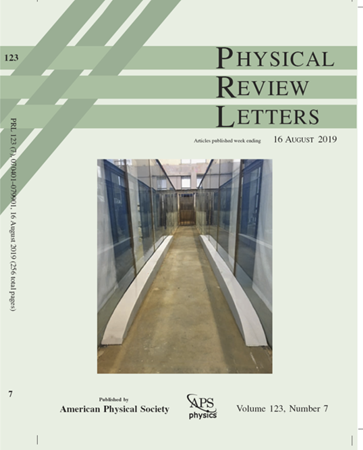用核星观测M82和M87的轴光子灵敏度领先
IF 8.1
1区 物理与天体物理
Q1 PHYSICS, MULTIDISCIPLINARY
引用次数: 0
摘要
我们利用NuSTAR望远镜的数据,对超轻轴子的存在进行了迄今为止最灵敏的搜索。我们在室女座星系团的M82星暴星系和M87中央星系中寻找恒星轴子的产生,然后在周围的磁场中转化为硬x射线。在计算轴子亮度时,我们对这些星系中的全部恒星种群进行了求和,并通过在模拟的IllustrisTNG模拟星系中使用磁场剖面来解释轴子到光子的转换。我们表明,对这些目标在大约30到70 keV之间的核星数据进行分析,没有发现轴子存在的证据,并导致轴子-光子耦合在|gaγγ|≤7.8×10−13GeV−1水平上的稳健约束,ma≤10−10 eV, 95%置信。2025年由美国物理学会出版本文章由计算机程序翻译,如有差异,请以英文原文为准。
Leading Axion-Photon Sensitivity with NuSTAR Observations of M82 and M87
We perform one of the most sensitive searches to date for the existence of ultralight axions using data from the NuSTAR telescope. We search for stellar axion production in the M82 starburst galaxy and the M87 central galaxy of the Virgo cluster and then the subsequent conversion into hard x-rays in the surrounding magnetic fields. We sum over the full stellar populations in these galaxies when computing the axion luminosity, and we account for the conversion of axions to photons by using magnetic field profiles in simulated IllustrisTNG analog galaxies. We show that analyzing NuSTAR data toward these targets between roughly 30 and 70 keV shows no evidence for axions and leads to robust constraints on the axion-photon coupling at the level of |gaγγ|≲7.8×10−13GeV−1 for m a ≲ 10 − 10 eV Published by the American Physical Society 2025
求助全文
通过发布文献求助,成功后即可免费获取论文全文。
去求助
来源期刊

Physical review letters
物理-物理:综合
CiteScore
16.50
自引率
7.00%
发文量
2673
审稿时长
2.2 months
期刊介绍:
Physical review letters(PRL)covers the full range of applied, fundamental, and interdisciplinary physics research topics:
General physics, including statistical and quantum mechanics and quantum information
Gravitation, astrophysics, and cosmology
Elementary particles and fields
Nuclear physics
Atomic, molecular, and optical physics
Nonlinear dynamics, fluid dynamics, and classical optics
Plasma and beam physics
Condensed matter and materials physics
Polymers, soft matter, biological, climate and interdisciplinary physics, including networks
 求助内容:
求助内容: 应助结果提醒方式:
应助结果提醒方式:


